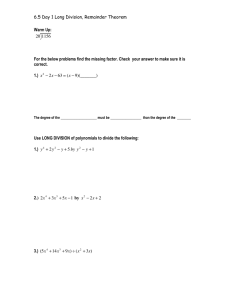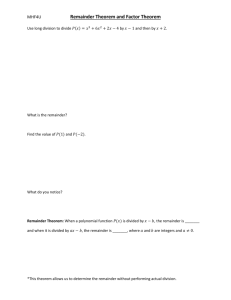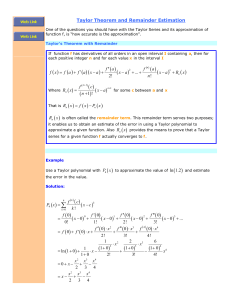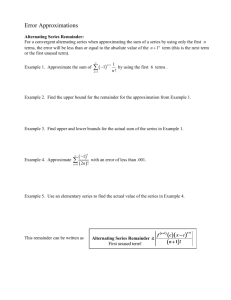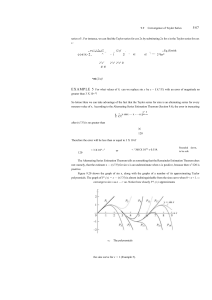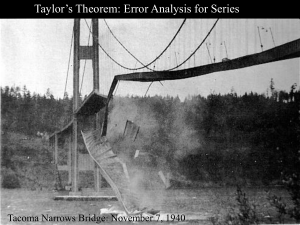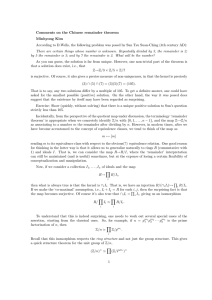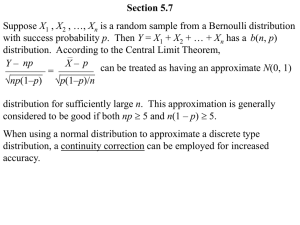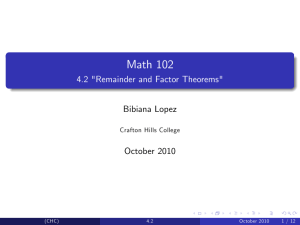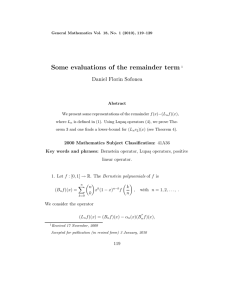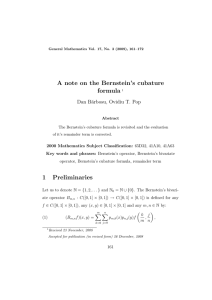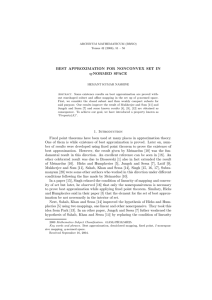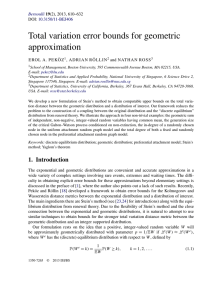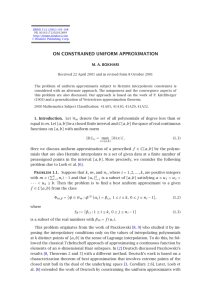Name____________________________ Calculus Period______
advertisement
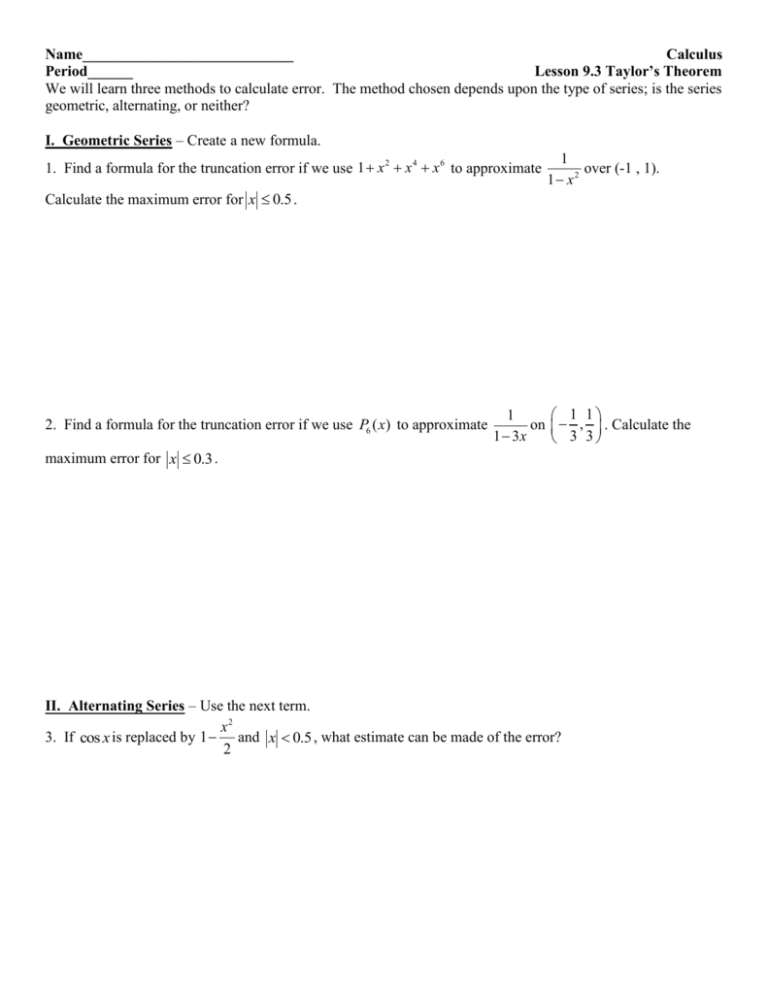
Name____________________________ Calculus Period______ Lesson 9.3 Taylor’s Theorem We will learn three methods to calculate error. The method chosen depends upon the type of series; is the series geometric, alternating, or neither? I. Geometric Series – Create a new formula. 1. Find a formula for the truncation error if we use 1 x 2 x 4 x 6 to approximate 1 over (-1 , 1). 1 x2 Calculate the maximum error for x 0.5 . 2. Find a formula for the truncation error if we use P6 ( x) to approximate 1 on 1 3x 1 1 , . Calculate the 3 3 maximum error for x 0.3 . II. Alternating Series – Use the next term. x2 3. If cos x is replaced by 1 and x 0.5 , what estimate can be made of the error? 2 Alternating Series (continued) – Use the next term. x3 4. For what values of x can we replace sin x by x with error magnitude no greater than 3 104 ? 3! III. Remainder Estimation Theorem – Develop the ‘next’ term and substitute the maximum x-value into the formula. f n ( x) x n error n! x2 is used when x is small. Use the Lagrange form of the remainder to get 2 a bound for the maximum error when x 0.1. 5. The approximation ln(1 x) x III. Remainder Estimation Theorem (continued) – Develop the ‘next’ term and substitute the maximum xvalue into the formula. f n ( x) x n error n! x2 6. The approximation e 1 x is used when x is small. Use the Remainder Estimation Theorem to 2! estimate the error when x 0.2 . x 7. The approximation x4 2 estimate the error when x 0.1. 1 x is used when x is small. Use the Remainder Estimation Theorem to 4


